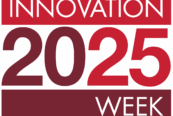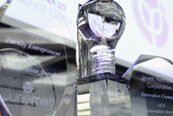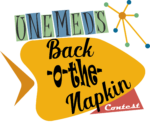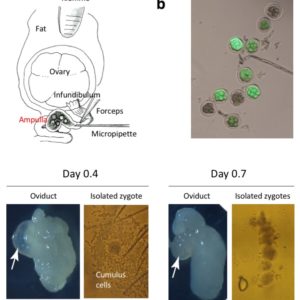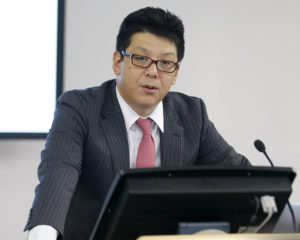 OMAHA, Neb. (Oct. 21, 2014)—Academic researchers and pharmaceutical companies seem perfectly suited for one another.
OMAHA, Neb. (Oct. 21, 2014)—Academic researchers and pharmaceutical companies seem perfectly suited for one another.
Where pharma appears to show weakness, academia shows strength. And where academia is weak, pharma is strong. The differences in overall mission between both are stark, but they are a near perfect counterbalance.
It would seem the university “yin” and the industrial pharmaceutical “yang” should yield fruitful research collaborations.
Yet, it’s no secret that there’s often dysfunction between the two.
Pharmaceutical executive Toru Seo, PhD, set out Tuesday afternoon to explain why that is, and offered a few simple measures for building better partnerships. The talk was part of UNeMed’s annual celebration of UNMC research, Innovation Week, which culminates with the Innovation Awards on Thursday, Oct. 23.
“Being a scientist,” Dr. Seo said, “I want to help people in academia because I know how hard it can be.”
Seo, who earned a doctorate in molecular and cellular pathobiology from Wake Forest University, was assistant professor at Columbia University and is now deputy general manager for licensing and business development at Taisho Pharmaceutical in Tokyo, Japan.
Drug discovery and development is increasingly more reliant on often cash-strapped academic researchers, while pharmaceutical R&D departments scale back budgets or narrow their scope. The changing dynamic means productive collaborations between industrial and academic partners is more important than ever.
“We have to have steady pipeline, and in order to have a steady pipeline we have to do better R&D,” Seo said.
When academic-industrial collaborations fail, it “almost always” lies at the feet of disagreements and misunderstandings center on intellectual property, goals, metrics or deliverables, he said.
The obvious fix is better communication, but Seo said the communications must first focus on the science. Identifying common goals, setting clear, detailed expectations for outcomes and providing timely feedback all build an engaged and transparent relationship—two critical elements that can’t exist without clear and consistent communication.
Seo closed his discussion with a quote former Fed Chairman Alan Greenspan. In a 2004 speech in Chicago, Greenspan said:
“I have found no greater satisfaction than achieving success through honest dealing and strict adherence to the view that, for you to gain, those you deal with should gain as well.”


